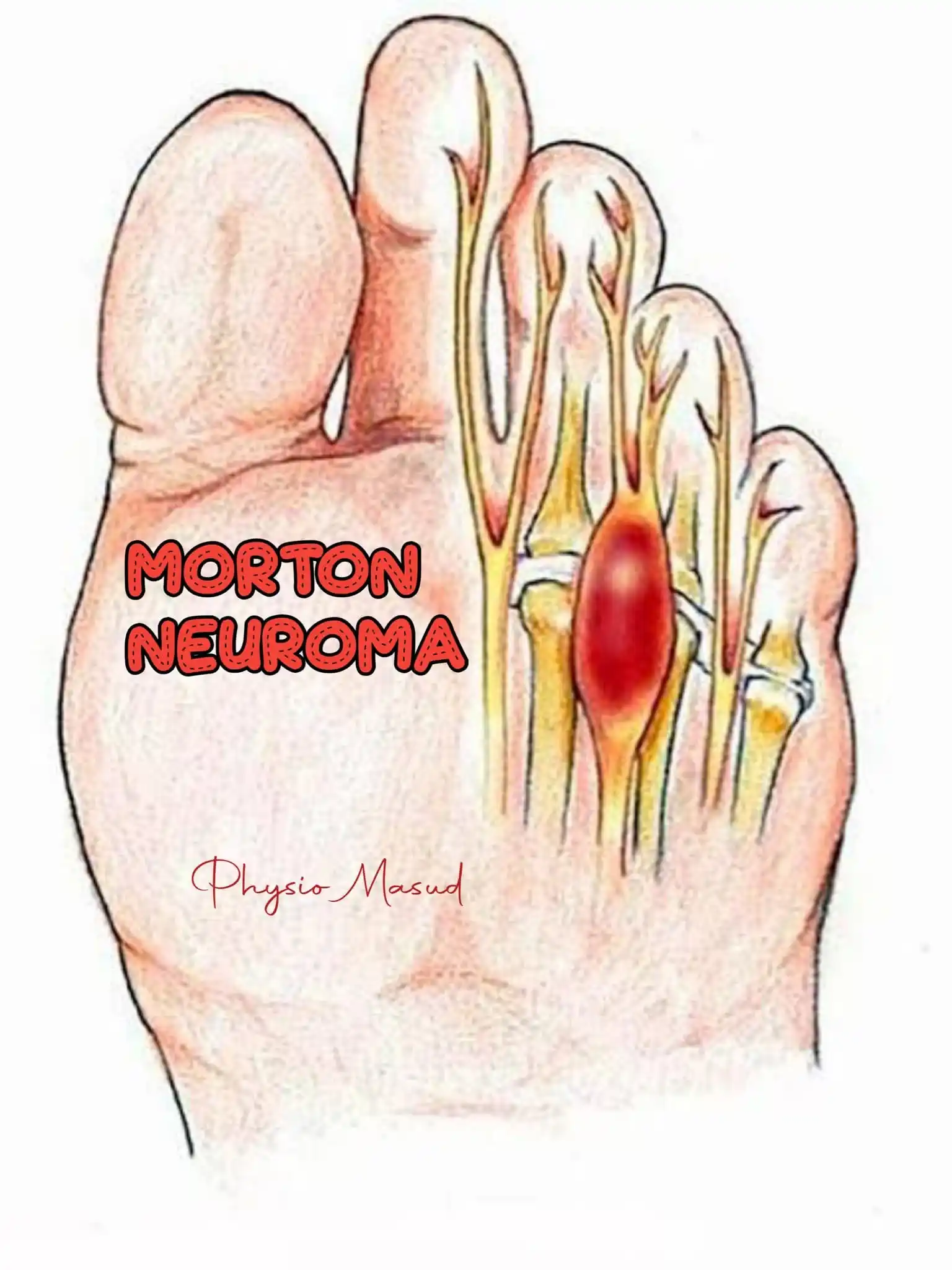
Doctor Ekhlas 👸🏻🥼🫀
June 17, 2025 at 05:27 PM
🦶 Morton’s Neuroma ( Everything you know here)
📘 Definition:
Morton’s Neuroma is a painful condition involving the thickening of the tissue around a Distal nerve leading to the toes, most commonly between the 3rd and 4th metatarsal heads. It is not a true tumor, but rather a perineural fibrosis or neuroma caused by nerve irritation or compression.
✅ Name Origin
Eponym: The condition is named after Thomas George Morton (1835–1903), an American surgeon.
🤷♀️Who was he?: Morton was a prominent Philadelphia surgeon at the Pennsylvania Hospital. He described the condition in 1876.
⁉️ Why his name?: Morton provided one of the earliest and most detailed clinical descriptions of a painful neuroma (nerve lesion) in the forefoot, specifically between the 3rd and 4th metatarsal heads, which caused burning pain and numbness — now known as Morton's neuroma.
⚠️ Causes:
👠 Wearing high heels or tight, narrow shoes that compress the toes
🏃♀️ Repetitive stress from activities like running or sports
⚖️ Overweight increasing forefoot pressure
🦶 Flat feet or high arches causing altered biomechanics
👣 Foot deformities (e.g., bunions, hammertoes)
🔁 Repeated trauma or microtrauma to interdigital nerve
🧠 Clinical Anatomy:
Affects the common digital plantar nerve (most commonly the third intermetatarsal space between 3rd and 4th toes)
The nerve runs under the deep transverse metatarsal ligament
Compression between the heads of the metatarsals leads to fibrotic changes
Plantar digital nerves branch from the medial and lateral plantar nerves (branches of the tibial nerve)
🚨 Signs & Symptoms:
⚡ Burning or sharp pain in the ball of the foot
🧨 Tingling or numbness in the toes (often 3rd & 4th)
👣 Feeling of a pebble in the shoe
🔥 Pain exacerbated by walking, wearing tight shoes or high heels
➖ Pain relief when removing shoes or massaging foot
🔬 Pathomechanism:
1. Repetitive mechanical stress → compression of digital nerve
2. Ischemia & inflammation of nerve
3. Perineural fibrosis develops around the nerve
4. Enlarged nerve irritates surrounding structures
5. Cycle of compression, irritation & fibrosis continues, worsening symptoms
🧪 Physical Examination:
Palpation: Local tenderness in the 3rd intermetatarsal space
Mulder’s Click: Compress metatarsal heads while squeezing the forefoot → palpable click & reproduction of pain 😖
Web Space Test: Applying pressure between metatarsals elicits symptoms
Toe Squeeze Test: Squeezing forefoot causes pain radiating to toes
📸 Diagnostic Tests:
MRI or Ultrasound: Can detect the thickened nerve
X-ray: To rule out other conditions like fractures or arthritis
Diagnostic Local Anesthetic Injection: Temporary relief confirms diagnosis
🧘 Physiotherapy Techniques:
🔄 Manual Therapy:
Joint mobilization: Especially of the metatarsals
Soft tissue mobilization: Plantar fascia and intermetatarsal areas
🧘♂️ Stretching:
Calf muscles
Plantar fascia
Intrinsic foot muscles
🏋️ Strengthening:
Foot intrinsic muscles (toe curls, marble pick-ups)
Arch strengthening exercises
🦶 Taping & Padding:
Metatarsal pads to spread metatarsal heads
Forefoot taping to relieve nerve pressure
🌬️ Modalities:
Ultrasound therapy
TENS (Transcutaneous Electrical Nerve Stimulation)
Cryotherapy or contrast baths
🦶 Supportive Orthosis:
Metatarsal dome pad (placed proximal to the neuroma site)
Custom foot orthoses with arch support
Gel toe spacers or wide toe box shoes
Rocker bottom shoes to offload forefoot pressure
🏠 Home Advice:
👟 Wear wide-toe, cushioned shoes
🩴 Avoid high heels or narrow footwear
❄️ Apply ice therapy after long walks
🧘♀️ Do toe stretches and foot exercises daily
🦶 Use metatarsal pads or soft insoles
🔁 Take regular breaks during prolonged standing/walking

❤️
3